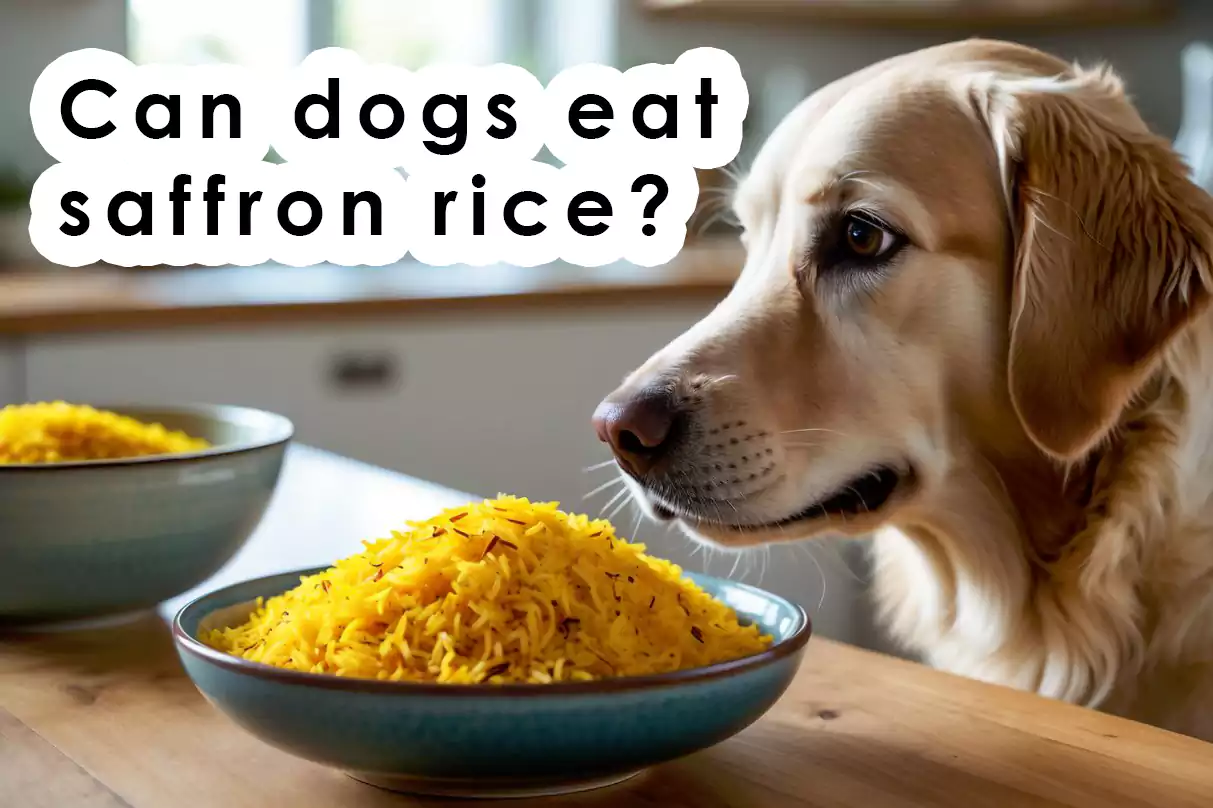Can dogs eat saffron rice? Safety and health considerations explained

Many dog owners wonder if saffron rice is safe for their pets. While plain cooked rice is generally safe for dogs, saffron itself can be risky if given in large amounts. Dogs can eat saffron rice in small amounts, but it should be free from added spices and seasonings to avoid health issues.
Saffron is not toxic to dogs by itself, but too much can cause vomiting, diarrhea, or stomach pain. It’s important to consider the dog’s health and dietary needs before offering saffron rice as a treat or part of their meal.
Careful preparation is key, only plain saffron rice without salt, oils, or other spices is suitable. Dog owners should always monitor their pets after trying new foods to watch for any adverse reactions.
Is Saffron Rice Safe For Dogs?

Saffron rice contains spices and ingredients that may affect dogs differently depending on the amount consumed. While small amounts might not cause harm, some components in saffron rice can pose health risks. Owners should carefully check what is in the dish before giving it to their pets.
Potential Health Risks
Saffron itself can be toxic to dogs if eaten in large amounts. It may cause vomiting, diarrhea, and stomach pain. Because saffron is a concentrated spice, even small doses can have stronger effects on dogs compared to humans.
In addition to saffron, other spices or seasonings in the rice might be dangerous. Some ingredients can damage organs or affect blood cells, increasing the risk of serious health issues.
Common Ingredients To Watch Out For
Saffron rice often contains onion, garlic, and nutmeg, which are harmful to dogs. Onion and garlic can destroy red blood cells and lead to anemia. Nutmeg contains toxins that can cause nervous system problems.
Plain boiled rice without salt or spices is safe for dogs, but once spices or oils are added, the risks increase. Pet owners should avoid sharing seasoned rice or dishes with unknown additives.

Symptoms Of Saffron Toxicity In Dogs
If a dog eats too much saffron or other risky ingredients, signs of poisoning may appear within hours. Common symptoms include:
- Vomiting
- Diarrhea
- Abdominal pain
- Lethargy
- Loss of appetite
If symptoms like these show up, a vet should be contacted immediately. Early treatment can reduce the chance of serious harm.
Nutritional Impact Of Saffron Rice On Dogs

Saffron rice contains nutrients from both rice and saffron, which can affect a dog’s health. The impact depends on the amount eaten and any added spices. Understanding these effects helps determine if saffron rice is a safe option for dogs.
Possible Benefits Of Saffron Rice
Saffron itself contains antioxidants that may have mild anti-inflammatory properties. These antioxidants can help support a dog’s immune system if consumed in very small amounts. However, saffron’s benefits in dogs are not well-studied and are mostly theoretical.
Rice provides a source of carbohydrates, which can offer energy. Plain white rice is often used to soothe upset stomachs in dogs. It is easy to digest and low in fat.
That said, saffron rice often has spices or ingredients like onion and garlic that are toxic to dogs. These can outweigh any nutritional benefit. So, the potential benefits apply only when saffron rice is plain and served in moderation.
How Rice Affects Dog Digestion
Rice is generally safe for dogs and can aid digestion in small quantities. It is a simple carbohydrate that provides easy energy and may help firm up stool in cases of mild diarrhea.
Dogs digest white rice faster than brown rice because it has less fiber. This makes it a better option for upset stomachs. However, too much rice can cause constipation or an imbalance in nutrients if it replaces a balanced diet.
Spices in saffron rice can cause digestive upset. Symptoms include vomiting, diarrhea, or gas. Because dogs have sensitive digestion, any added spices raise the risk of stomach issues. It is important to feed plain rice without harmful ingredients.
Alternatives To Saffron Rice For Dogs

Saffron rice can be risky for dogs because of spices and additives. Safer options include plain rice varieties and certain healthy foods that add nutrition and flavor without harm. These choices support a dog’s health and digestion.
Dog-Friendly Rice Alternatives
Plain white rice and brown rice are the safest alternatives to saffron rice for dogs. Both are easy to digest and can help soothe upset stomachs. Brown rice has more fiber and nutrients than white rice but may take longer to cook.
Avoid rice dishes with spices, onion, garlic, or other ingredients toxic to dogs. Feeding too much rice can lead to weight gain, so it’s best to offer rice in moderation.
Other grains like quinoa and oatmeal are also good substitutes. Quinoa adds protein and fiber, while oatmeal can improve digestion. Always introduce new foods slowly to monitor any reactions.
Healthy Additions To Homemade Dog Meals
Adding fresh vegetables or herbs can improve homemade dog meals. Safe options include cooked carrots, green beans, and peas. These provide vitamins and fiber without risks.
Small amounts of fresh herbs like parsley or basil can add flavor. They also offer antioxidants without the health dangers linked to spices used in saffron rice.
Avoid toxic ingredients such as onions, garlic, nutmeg, or excessive salt. Keeping meals simple and balanced helps maintain the dog’s health and prevents dietary issues.

Frequently Asked Questions
Some rice dishes contain spices and ingredients that may affect dogs differently. Understanding which types and additives are safe or risky helps pet owners make better feeding choices.
